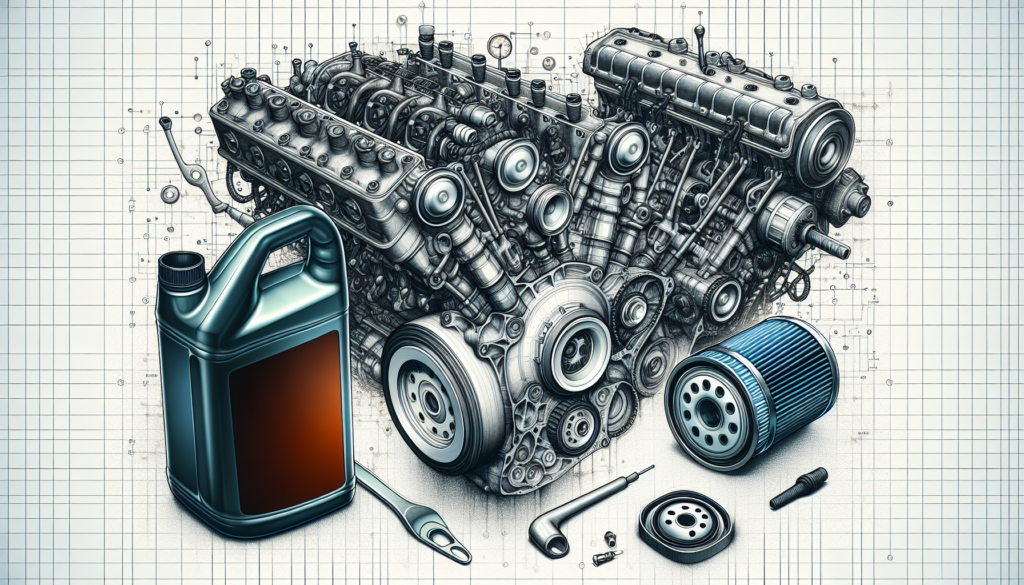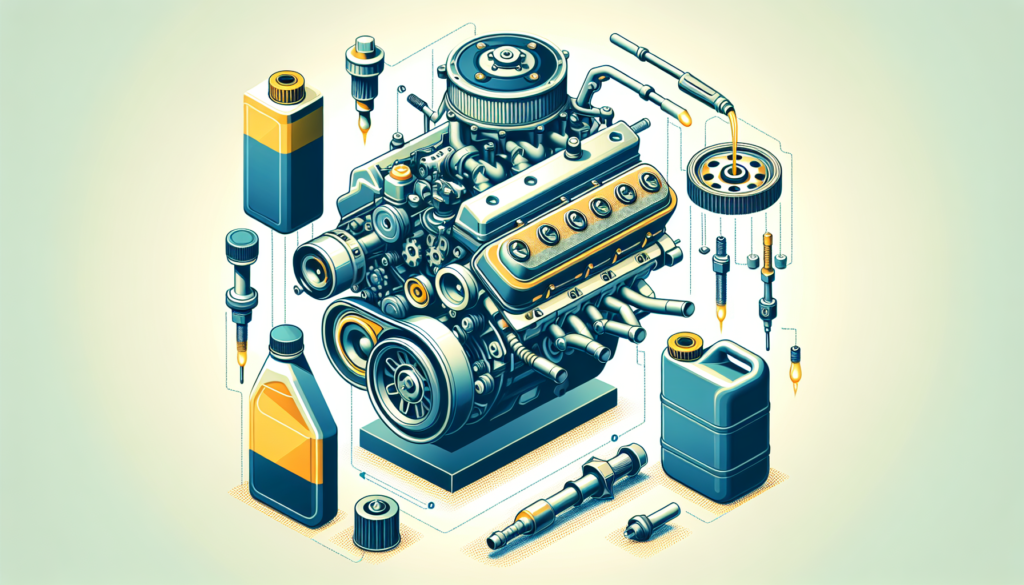Embarking on a journey to understand the intricacies of a boat engine oil change? You’re in the right place. This article serves as a step-by-step guide meticulously designed to assist you with this often daunting task. You’ll learn everything from preparing your workspace to the safe disposal of old oil. As we comprehensively break down each stage of the process, you’ll find that changing your boat engine oil is not as complicated as it seems. So, buckle up, and prepare to become your boat’s personal mechanic. Let this exciting journey of knowledge and discovery begin!

Understanding the Importance of Regular Boat Engine Oil Changes
A regular oil change is crucial to keep your boat engine functioning optimally. There are significant benefits tied to frequent oil modifications that you may be unaware of.
Influence on engine performance
Optimal engine performance is directly linked to the quality and cleanliness of the engine oil. Fresh oil lubricates the engine effectively, preventing friction between various components. Over time, the oil gets contaminated with metallic particles and loses its viscosity. If not replaced, this could lead to increased wear and tear on the engine parts, leading to reduced performance. Therefore,it is vital to change the oil regularly and ensure your boat engine remains in top condition.
Role in extending engine lifespan
Regular engine oil changes significantly extend the lifespan of your boat engine. The engine oil acts as a coolant, keeping the engine from overheating. Fabricated particles and debris can, with time, result in blockages if the oil is not regularly drained and replaced. The engine will then tend to overheat and, if unchecked, could cause serious damage.
Importance for fuel efficiency
Clean engine oil plays an essential role in fuel efficiency. Clogged and old oil forces the engine to work harder, which uses up more fuel. In contrast, clean oil ensures smooth operation, which, in turn, optimizes fuel consumption.
Gathering the Necessary Tools and Materials
Before you embark on changing your boat engine oil, ensure you have all the necessary tools and materials.
List of required tools
You will need a set of wrenches to loosen and tight the oil drain plug, an oil filter wrench for removing the old oil filter, and a funnel for adding new oil. An oil extractor pump may also come in handy to efficiently drain out the old oil.
Specific types of boat engine oil
There are various types of boat engine oil in the market. It’s crucial to find the right type that suits your specific boat engine model. The owner’s manual would usually specify the right kind of oil to use.
Safety equipment
Safety should be your top priority when carrying out an oil change. Ensure you have safety glasses to protect your eyes and gloves to safeguard your hands from the dirty oil. You may also need a coverall to protect your clothes from possible oil spills.

Locating the Oil Drain Plug
A successful oil change starts with locating the oil drain plug.
Understanding the engine configuration
Every boat engine configuration is distinct. You need to understand yours to find the oil drain plug correctly. It is often located at the lowest part of the engine’s oil pan.
Determining best access points for oil change
Depending on your boat engine’s configuration, you will have to determine the best points to access during the oil change. Usually, the access points are underneath the engine or through the dipstick tube.
Issues to notice with a visibly worn or damaged oil drain plug
Examine the oil drain plug carefully. If it’s visibly worn out or damaged, it will have to be replaced. A faulty or worn-out drain plug can affect the oil’s efficiency in cooling the engine, which may result in significant engine damages.
Preparing for the Oil Change
Just like any mechanical job, it’s essential to prepare adequately before changing the oil.
Safety precautions to take
Firstly, make sure to wear your safety glasses and gloves. You should also ensure your boat engine and the surrounding area is clean from dirt and debris before you start.
Ensuring the engine is in the optimal state for an oil change
Before you drain the oil, run the engine for a few minutes. This warms up the oil, allowing it to flow out more easily. However, it is essential to let the engine cool down for a few minutes before you start the oil change to avoid burns.
Placing collection containers
Place a collection container beneath the oil drain plug. Ensure it is large enough to hold the engine’s total oil capacity to prevent spills.

Draining the Old Engine Oil
Once you’re set, the next step is to drain the old engine oil.
Unscrewing the oil drain plug
Begin by unscrewing the oil drain plug using your wrench. Be careful when doing this to avoid the oil splashing on you.
Tactics for dealing with a stuck or seized oil drain plug
Should the plug not move, do not force it. Instead, you can apply a penetrant spray or some warming oil on it and wait for some minutes before trying again.
Appropriate disposal methods for old engine oil
Dispose of the old engine oil responsibly. Collect it in a sealed container and take it to a recycling facility or an auto repair shop that accepts used oil.
Removing the Old Oil Filter
After draining the old oil, the next step is to remove the old oil filter.
Finding the oil filter location
The location of an oil filter varies depending on the engine but is typically found on the side of the engine block.
Techniques for oil filter removal
To remove the oil filter, you will need an oil filter wrench to help unscrew it. Remember to place the collection container underneath it as it will have residual oil leaking out.
Issues to watch out for when removing old oil filters
Handle the old oil filter with care as it is filled with used oil. Be on the lookout for any visible damage on the filter housing or gasket. Any damage necessitates an immediate replacement as leaks could occur.

Installing the New Oil Filter
With the old oil filter removed,you can now install the new one.
Preparation for new filter installation
Before installing the new filter, apply a light coating of new oil on the gasket. This helps create a viable seal and makes it easier to remove the filter during the next oil change.
Understanding the correct placement and orientation
Ensure you know how the new filter should be positioned. Typically, it is installed in the same direction that the old one was positioned.
Optimum tightness of the new oil filter
Tighten the oil filter until the gasket contacts the filter housing, then tighten more by about half a turn. Over tightening can damage the seal and cause leaks, while under tightening could cause the filter to fall off.
Adding New Engine Oil
With the new oil filter in place, you are now ready to add the new engine oil.
Correct pouring techniques
Use a clean funnel to pour the new oil into the engine. Pour slowly to prevent splashing and reduce the chance of introducing air into the oil.
Determining optimum oil capacity
Check your boat engine manual for the correct oil capacity. Adding too much oil can result in foaming, while too little oil may cause the engine to seize.
Identifying possible leaks during refilling process
Once the engine is filled, check for any oil leaks around the oil drain plug and the oil filter before starting the engine.
Checking the New Oil Level and Engine Performance
You are almost there! Now, you need to check the new oil level and the engine performance.
Properly utilizing the oil dipstick
Wipe the dipstick clean, then insert it into the oil reservoir. Pull it out and ensure the oil level is between the two markings on the dipstick.
Starting the engine and observing for irregularities
Start the engine and let it run for a few minutes. Any abnormities such as strange noises, vibrations, or smoke should be noted and addressed immediately.
Assessing the oil pressure
Most boats have an oil pressure gauge. After running the engine, check the gauge. If the pressure is too low, it may indicate a leak or a problem with the oil pump.
Maintaining Regular Oil Change Schedule
Regular oil changes extend your boat engine’s life. Therefore, it’s necessary to keep up with a maintenance schedule.
Determining suitable frequency for oil changes
The frequency of oil changes depends on the boat engine manufacturer’s recommendations. Most commonly, a change after every 100 hours of operation, or at least once a year, is recommended.
Record keeping for oil changes
For better maintenance, keep a record of all oil changes, including the date and the engine hours.
Possible signs for an overdue oil change
If you notice a decrease in engine performance, increased fuel consumption, or if the oil looks dark and dirty, it’s likely time for an oil change. Regular servicing and oil changes ensure that your boat engine will serve you efficiently for a very long time.

